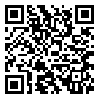
 , Fatheme Hajimaghsoodi
, Fatheme Hajimaghsoodi 
 , Ali Karimzade
, Ali Karimzade 
 , Seyedhossein Hekmatimoghaddam *
, Seyedhossein Hekmatimoghaddam * 
 , Mansour Esmailidehaj
, Mansour Esmailidehaj 
 , Fariba Binesh
, Fariba Binesh 

Background and Aims: Ecstasy or 3, 4-methylenedioxymethamphetamine (MDMA) is a brain stimulant and a hallucinogenic material prepared by chemical changes in amphetamine. The aim of this study was to evaluate the changes induced by this drug in mouse cardiac histopathology, electrocardiogram (ECG) and blood cell counts.
Materials and Methods: In this experiment, 3 groups (n=10) of mice were enrolled. Group 1, as control, received placebo. Group 2 mice were given single daily low dose (20 mg/kg/d for 28 days) of intraperitoneal MDMA, and group 3 were given single daily high dose (40 mg/kg/d for 28 days) of intraperitoneal MDMA. An ECG, aVF lead record was obtained, and then a blood sample was taken for complete blood counts and the heart was removed for microscopic study of tissue sections with routine staining.
Results: The group 3 showed significant decrease in erythrocyte indices, myocarditis in 7 cases and monocyte infiltration around cardiac myocytes in 6 cases. In group 2, lower degree of myocardial injury was observed, displaying significant increase in QT and QTc durations in ECG. In high dose group, red blood count, hematocrit, mean cell volume and mean corpuscular hemoglobin concentration showed significant changes with comparison control group.
Conclusions: Ecstasy can effect on red blood cell index and can lead to anemia. Many monocytes see around of cardiac cell with increase of ventricular depolarization and repolarization can lead to increase of QRS-QT interval. Combination myocarditis with arythmia and increase of sinus tachycardia show change in cardiac function and myocardial structure, cardiac injury due to hypoxia and ischemic can cause of myocardial infarction.
Received: 2015/05/17 | Accepted: 2015/05/17 | Published: 2015/05/17
| Rights and permissions | |
 |
This work is licensed under a Creative Commons Attribution-NonCommercial 4.0 International License. |
